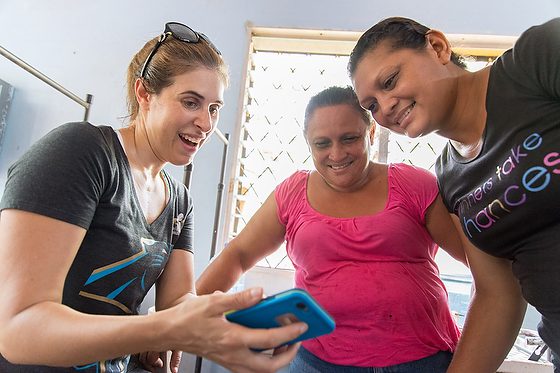| |
| Fujifilm X-E2, FUJINON XF 55-200mm, ISO 6400, ƒ/5, 1/125 |
NEWS UPDATE!!!
This morning I went to Fujifilm.com and discovered there was a firmware update on the Fuji X-E2. Go here if you need to upgrade to the latest Firmware, 4.00.
Due to the upgrade and having the opportunity tonight to reshoot the same play, I will write a new follow-up post on Monday about the firmware upgrade and how it helped improve my experience. Well, that is what I anticipate.
One huge update is an electronic shutter release that you can make silent. The camera, on default, actually plays a recorded sound that you can change to different noises, just like ring tones, or turn it off completely. So, in essence, a silent camera. So this I can tell you already will be better than last night.
Observations from last night’s photoshoot
When shooting a theater performance, you can quickly hear how quiet the auditorium will get so everyone can appreciate the dialogue. However, in a high school play like the one, I shot last night, the actors’ ability to all project like professionals is not the same.
Some of the actors required the audience to work hard to hear them, which is when you quickly realize how loud a camera can be in this environment.
 |
| Fujifilm X-E2, FUJINON XF 55-200mm, ISO 6400, ƒ/4.5, 1/280 |
The Fuji X-E2 is a pretty quiet camera. One of the main reasons it is silent compared to other DSLR cameras is the lack of a mirror.
Do you get the same quality if you get rid of the mirror? Well, in this case, it does help. However, because you have no mirror, you are also eliminating one of the things that often affects the sharpness of DSLR cameras–the mirror. In a DSLR, a mirror lets you see through the lens, and when you press the shutter release, the mirror goes up, the shutter opens, and then the mirror goes back down. In addition, moving mechanical parts introduces some vibration in the camera, which often can add just enough vibration to make your images not quite as sharp.
 |
| Fujifilm X-E2, FUJINON XF 55-200mm, ISO 6400, ƒ/4.4, 1/110 |
The second thing that helped with the photo quality was the Fujinon XF 55-200mm ƒ/3.5–4.8 lens. It has built into the lens optical image stabilization for effective 4.5 stops improvement. So if you breathe a little in the photo, the camera will, in essence, take care of the vibration you introduce into the camera.
The 55-200mm lens is quite sharp for zooms. Fuji makes some of the world’s best lenses.
 |
| Fujifilm X-E2, FUJINON XF 55-200mm, ISO 6400, ƒ/4.4, 1/150 |
One of the best attributes of shooting mirrorless is seeing what you are shooting before you shoot. Before you shoot, you are visiting the processed image in terms of exposure and white balance in the viewfinder or on the LCD. Therefore, you can see if the color or exposure is off and correct it before shooting.
With the DSLR, you can REVIEW, but you cannot PREVIEW. This ability to PREVIEW an image helps you know if you will be getting the image correct before you push the shutter.
 |
| Fujifilm X-E2, FUJINON XF 55-200mm, ISO 6400, ƒ/8, 1/80 |
While shooting this scene where the one actress on the floor is quite far from the other actors, I knew I wanted both of them in focus. So I cranked the aperture to ƒ/8. So now I could see everyone was in focus.
 |
| Fujifilm X-E2, FUJINON XF 55-200mm, ISO 6400, ƒ/4.8, 1/45 |
The 55-200mm at 200mm is the same as a full-frame camera with a 300mm lens. The rule would be to have the shutter speed at 1/300 to avoid motion blur, but the camera and lens did a great job at almost 3-stops lower than the recommended shutter speed for this lens.
Side Note
Since downloading the new Firmware this morning, I am again falling in love with the Fuji X-E2. You see, Fuji is doing what Nikon nor Canon is doing with their cameras. When the ability to write better software comes along, other manufacturers save this for the new cameras. Therefore manufacturers are forcing you to buy a new camera.
Tune in Monday for my new CAMERA review due to Fuji upgrading the Fuji X-E2 with new Firmware.






































































